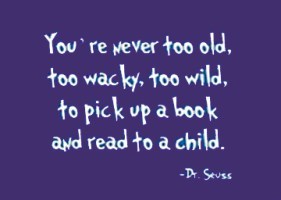Remy Agee's Blog
May 31, 2016
There’s A Thief in Your House…
 and it’s your children and grandchildren who are vulnerable!
and it’s your children and grandchildren who are vulnerable!
It’s in your house 24/7. For the most part, it’s a good thing. But when it comes to children, it can be robbing them of something very precious. And it’s happening right before your eyes.
Here’s the thief – and here’s what’s at stake.
Your child’s imagination is being hijacked. On a daily basis.
It’s not just watching TV. It’s today’s technology – and all sorts of devices. I’m not a crazy grandmother: I’m not saying it’s all bad. There are indeed benefits to children using technology. It can help children learn to read; grasp math concepts; and discover all sorts of wonderful information.
But allowing a child to use tech devices on a regular basis in lieu of a child’s free play time poses a danger to that child’s healthy development. It’s harmful to brain development. It’s inhibits learning critical life skills. It detracts from your child’s ability to develop important social and communication skills.
This isn’t just my opinion. Experts from various professions across the US and around the world agree. Research about healthy child development, school readiness and job readiness skills, social and relationship skills…all identify imagination as even more than a critical thinking and problem solving skill. Really, an important resource to negotiate life and face life’s challenges. Imagination is the ‘engine’ of ideas.
Even Einstein understood how important imagination is:
“Imagination is more important than knowledge. For knowledge is limited to all we now know and understand, while imagination embraces the entire world, and all there ever will be to know and understand.”
Your child’s imagination isn’t innate. It doesn’t always come naturally. It’s an unlimited, invaluable resource for your children’s and grandchildren’s success in school and life. But it doesn’t happen by accident.
A child’s imagination must be nurtured, stretched and given every opportunity to expand.
Technology robs your child of the opportunity to use his or her imagination. Picture this:
Your child is reading a book with you or on his/her own. While there may be illustrations, your child still visualizes all or some of how
the characters look, act and sound;
the story unfolds;
the action in the story happens and sounds; and
the background, buildings, vehicles, animals, etc., look.
Now, picture a child watching the movie of the book. The child doesn’t have to visualize anything. It’s all there, done for him or her. No need to use the imagination or brain. Just sit back and watch. Veg out, if you will.
What about those ubiquitous video games?
There’s no real problem solving or critical thinking skills required here. No communication or interraction with real people and no social skills being developed.
We’re a connected world today. Technology serves so many useful purposes. But for children and grandchildren, technology is no replacement for…
experiential learning;
social interactions;
child-directed free play;
expressing one’s self and communicating with humans; or
problem solving using imagination and critical thinking skills.
And, dare I say it? Just doing some things the old fashioned way.
March 1, 2016
Have you Heard About Family Read-A-Thons?
 Start a Family Read-A-Thon!
Start a Family Read-A-Thon!What’s not to love about this unique family activity?
It’s something your entire family can do together, even the little ones. It gets the family reading more. It raises money for a local charity or community organization.
And it can be done by just one family.
It’s a great concept I discovered in “Doing Good Together” (authored by Jenny Friedman, Ph.D and Jolene Roehlkepartain), a wonderful book of easy, meaningful service projects for families, schools and communities.
The basics:
Each family member commits to reading books during a set period of time.
You can expand the project beyond your immediate family: Ask grandparents, aunts, uncles and cousins to join you!
This is a wonderful way to help children learn about giving back to their own community.
Each participant keeps an individual list of the books read. The youngest members of your family can ‘count’ books read to them by a parent or books read together, including bedtime stories.
The family identifies a single charitable or community organization to benefit from the funds raised.
As a group, the family gets ‘sponsors’ for each book read.
Plan a family celebration at the end of your successful project!
Here are some ideas to help get your family project started:
Use your social media networks to let friends and family know about your Family Read-A-Thon. Include the two benefits: Your family will be reading more books as part of a unique family activity. And, you’ll be raising money for a local community organization.
Notify the selected community organization of your project and how you plan to raise funds to support their activities.
Share information about the charitable or community organization that will benefit from your family project.
Let the sponsors decide the amount of support for each book read. Remind them that this is a family project, so sponsors are committing to the total number of books read by the entire family.
Notify sponsors of the start and end date.
Post updates during your Family Read-A-Thon via social media and emails.
Ask sponsors to make their checks payable to the organization you have selected and mail the checks to your family.
Deliver the checks – as a family – to the local charity or community organization or sponsors can mail checks directly to the organization with a note on the check that it is for your Family Read-A-Thon.
This is such a great idea that my daughter, grandson and I started our own Family Read-A-Thon on February 1st. And we’re reading through the end of March. Our community service project is progressing. We had read 28 books by the end of February with 7 sponsors!
See for yourself and read all of the great comments we’ve received about our posts. Go to Reading for Cats and Dogs, our Facebook page, using this link. While you’re there, would you LIKE our page? (Thanks!)
“Doing Good Together” is available on Amazon by using this link. With 101 service projects, it’s also a great resource for school and community group projects. The book contains an entire section on how to have a successful family project, including how to choose one; planning the project; and lots more.
Photo: http://www.123rf.com
February 23, 2016
Don’t Be Yourself When Reading to Kids

Really. Don’t. Unless you’re a trained actor or performer.
Otherwise, loosen up… have fun, be silly, be a kid again!
Best tip: Children won’t judge how well you do. They’ll just appreciate you reading to them and making it enjoyable. Make it fun!
Ok. That said…take a moment, breathe deeply and think kids, the only audience you’ll have.
Here you go!
Read books that you enjoy.
Use different voices for different characters. Make funny faces. Make serious faces.
Change the tone and inflection of your voice, as you read.
Talk loudly sometimes, softly other times – depending on what’s happening in the story.
Read more quickly, if the story line is getting tense or there’s a lot of activity…like you can’t wait to see what happens next.
Hold the book so the child or children can all see the illustrations. Stop and talk (even briefly) about the pictures. If there are no illustrations or only a few, ask the child or children what they think the part of the story would look or sound like.
If the book has sentences that are repeated throughout the story, prompt the kids to say that part of the story. This works really well for rhyming text that often has repetitive words or lines. Or if one character keeps saying the same words throughout the book.
Ask what the child thinks will happen next BEFORE you turn the page.
Extend the story time by asking questions that will spur discussion about the book, as well as the fun of the book. Try these:
What was your favorite part of the story?
Do you want to act out that part of the story?
What character did you like best? What did you like about him/her/it?
Would you change the ending? If yes, how would you change it?
Which character is most like you?
Which character is most like me?
This is your chance to help encourage a child’s love for reading and books.
An opportunity to make your time together memorable.
And a return, albeit brief, to the fun and freedom of childhood!
February 19, 2016
3 Things Preschool Teachers Can Teach You About Kids Books
 Walk into any brick-and-mortar book store or search for children’s books online and you’ll encounter an onslaught of books. Some great, some not so great. Some true classics.
Walk into any brick-and-mortar book store or search for children’s books online and you’ll encounter an onslaught of books. Some great, some not so great. Some true classics.
So what can preschool teachers teach you about choosing a good children’s read?
I went directly to the best source: Early childhood education professionals I know. My mini-survey consisted of just one question: What do you look for, in a quality children’s book?
Surprise! They all identified the same qualities of a good children’s book. I’m not claiming this is a statistically valid random sample poll. Yet this is worthwhile info for adults, grandparents and caregivers in search of a fun, enjoyable read with the young children in their lives. That’s birth through the preschool years.
Drum roll please…
Bright, colorful yet simple illustrations
Pictures of every day objects that a child can relate to
Rhyming text that helps children with pre-reading activities (literacy learning)…hearing letter sounds and sound similarities
Simple, yet a helpful guide next time you’re shopping for good books for kids and grandkids!
February 11, 2016
3 Hall of Fame Toys Every Kid Should Have
 59 classical toys from which to choose. That’s 59 HALL OF FAME toys.
59 classical toys from which to choose. That’s 59 HALL OF FAME toys.
For the past 13 years, the annual selection criteria are items that have icon-status (widely recognized); longevity (not a passing fad); discovery (foster learning and creativity through play); and innovation, according to the National Toy Hall of Fame.
Did you even know it existed? Probably not. But that doesn’t diminish the value of recognizing new and historic versions of classic toys.
And, these toys aren’t just selected. They’re inducted.
The list offers some long-time favorites, such as alphabet blocks; hula hoop; jack-in-the-box; bicycle; roller skates; chess and checkers; and jump rope. Not to be overshadowed by Legos, G.I Joe, Lionel Trains, Mr. Potato Head, Play Doh, Dominoes and Monopoly.
Wait, though. While those toys would be the ones you’d would want to rush out and buy for your child or grandchild, they don’t make my Top 3 List.
No, I’m focused on Hall of Famers that will jump start any child’s imagination, offering hours of child-directed, free play. No batteries, directions or adults required. The ones that can meet just one of the four requirements – innovation – by ‘profoundly changing play’and still make the cut.
So, what would the 3 best toys of all time be? Get ready to be surprised.
And even more astonishing: You don’t need to rush out to buy them!
Here are my choices for toys that promote free play with children using their imagination to invent and discover on their own, at their own pace and in their own way. Just sit back and watch the many ways these three ordinary items become extraordinary toys.
And while I know your children or grandchildren won’t need any help figuring out how to use these toys for all sorts of pretend play, I want to be sure adults see all the possibilities here.
Cardboard Box: Inducted 2005
The ones on your doorstep from Amazon or used to deliver your new appliance. Shoe boxes; computer paper cartons; moving boxes. Any shape and size works whether painted or colored with crayons…kept intact or cut apart.
costume with arm holes cut out
vehicle (car, spaceship, bus)
puppet theater, storefront
fort, house
game box – cut hole, throw items in
mailbox for letters
musical instruments
buildings and roads for matchbox cars and construction vehicles
houses for dolls and action figures
Blanket: Inducted 2011
Light or heavy, large or small. Works indoors and out.
tent or fort
cape
parachute
setting for indoor picnic
room divider
magic carpet
pull around stuffed animals
pulled around/ride on for a child
Stick: Inducted 2008
Considered possibly the world’s oldest toy by the National Toy Hall of Fame. Can be used indoors or outdoors.
fishing pole
stick house
play fetch with your dog
walking stick
draw in the dirt
flag (add some material)
tie sticks together for a toy raft
So, there you have three outstanding toys. And Hall of Fame toys at that! Who would have thought?
Visit The National Toy Hall of Fame located in the National Museum of Play to discover more Hall of Fame
5 Things To Jump Start Your Child’s Imagination Right NOW!
 News flash: Imagination isn’t just a child’s pretend play.
News flash: Imagination isn’t just a child’s pretend play.
Both adults and children need the power of imagination!
Imagination is a critical thinking skill. And problem-solving tool. It’s the engine of ideas. To Albert Einstein, imagination was more important than knowledge!
It starts with someone identifying a need. Followed by someone free thinking enough to imagine and ponder all the possibilities, no matter how absurd the idea may sound at the time. It’s that “What if….?” mentality that has led to so many innovations and advances in fields such as
medicine: organ transplants; cancer research; prosthetics
technology: computers, communication satellites, wifi, smart phones, wearable technology
science: renewable energy, the international space station and travel to Mars
Imagination is key to your child’s success in school and later life. Imagining a scenario can help children figure out how to interact with others in social settings; negotiate life’s challenges; and even plan their day.
So, what can you do right now to help your child (no matter the age) develop and stretch his/her imagination? Start here:
1. Read an actual book first. Then if you want, watch the movie.
Reading the book allows a child to use his/her imagination for what the characters look and sound like. And to visualize the action in the story – in more detail, even if the book is illustrated.
You can actively engage your child in what’s happening in the story. Asking questions as you read and after the story is finished spurs the imagination: What do you think will happen next? How would you change the ending of the story? Which character did you like best and why?
2. Encourage more frequent child-directed free time just to play.
Let your child decide how and what to play, even if you join in the fun. Resist the urge to direct or guide the play time. This unstructured play allows him or her to imagine role playing and problem solving without there being a right or wrong way to do so. Even school-age children benefit from child-directed free play. How much time during the school day do they really get to determine how and what they will do?
Letting your child discover the world in his/her own way and at his/her own pace offers an opportunity to explore different activities using imagination.
3. Go on spontaneous adventures.
Step away from the rigid schedules of daily life and enjoy spur-of-the moment fun. Go for an adventure in the backyard, the park or even in your own home. No need for supplies or special equipment, just make them imaginary. Let your child or grandchild choose the adventure. Or, give them one word – pirates, space, beach, jungle, zoo, mystery – and let him or her create the adventure.
Your adventure can be as long or short as you have time. Short adventures can help break up a stressful day!
4. Choose toys that let your child discover and decide what to do with them.
Avoid toys that are battery operated or can only be used in one way. Look for ones that allow for multiple ways to play, as that opens up your child’s or grandchild’s imagination and lets him or her determine how to play with the toy.
Recycle things like old shirts, jackets, ties, scarves, suitcases, sunglasses, shoes, hats, jewelry to use for acting out books you’ve read or stories you create.
Grab everyday household items – wooden spoons, pots and pans, empty boxes, storage containers, gift boxes and the like – and turn ordinary items into extraordinary toys with your child’s imagination.
5. Make up stories with your kids or grandkids.
Create your own stories by tapping into your and your child’s or grandchild’s imagination. Any topic, any time and any place (here on earth or in the universe) works. No right or wrong, just whatever they can imagine is the best. Silly or serious. Take turns adding sentences or sections of a story.
Use ‘down’ time to stretch everyone’s imagination and this could become one of your family’s favorite fun activities.
Nurturing and stretching a child’s imagination is a priceless gift parents and grandparents can give that will last a lifetime!



